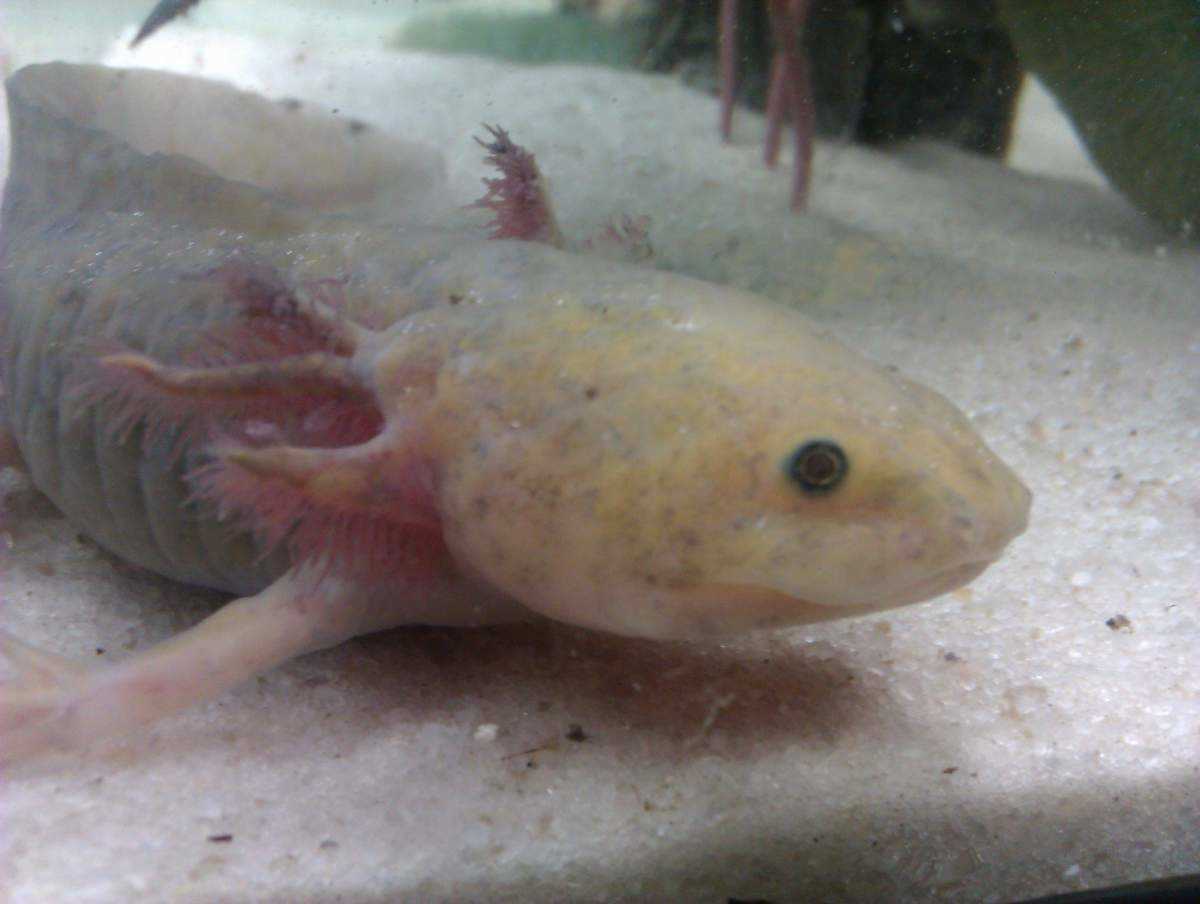
The primary reason behind the color change in axolotls is their ability to adapt to different environments and communicate their emotions. When an axolotl experiences stress, happiness, or even aggression, it will often reflect these emotions through changes in its skin color. These changes can occur within minutes or hours and can range from light and dark patterns to completely different colors.
Proper care is essential for maintaining the health and well-being of axolotls. They require a clean and spacious aquatic habitat with appropriate water temperature and quality. Additionally, providing hiding spots, such as plants or caves, can help reduce stress and encourage a natural color change in axolotls. Regular monitoring of water conditions, adequate nutrition, and a balanced diet are also crucial aspects of axolotl care.
The Natural Phenomenon of Axolotl Color Change
The axolotl is a unique amphibian species known for its ability to undergo color changes. This natural phenomenon is fascinating to observe and has intrigued scientists and enthusiasts alike.
One of the main factors contributing to axolotl color change is their environment. Axolotls have the remarkable ability to adapt their coloration to their surroundings, allowing them to blend in and remain camouflaged. This adaptive color change is particularly useful for these aquatic creatures, as it helps them evade predators and catch prey.
The primary pigments responsible for the axolotl’s coloration are melanophores, xanthophores, and iridophores. Melanophores contain dark pigments, xanthophores contain yellow and orange pigments, while iridophores produce iridescent colors. The combination and arrangement of these pigment cells result in a wide range of color variations in axolotls.
Stress is another factor that can impact axolotl coloration. Axolotls are sensitive creatures, and stressors such as poor water quality, overcrowding, or handling can lead to color changes. When stressed, axolotls may become pale or develop patches of lighter or darker coloration.
Water quality is crucial for maintaining the vibrant coloration of axolotls. Poor water conditions, such as high levels of ammonia or nitrites, can negatively affect their color. It is essential to provide clean, well-filtered water to ensure optimal health and coloration.
Genetics also play a role in axolotl color variation. Certain genetic traits can influence the colors and patterns exhibited by these amphibians. Breeders have selectively bred axolotls to enhance specific color morphs, resulting in a wide array of stunning and unique colorations.
Caring for axolotls involves providing them with optimal habitat conditions. A spacious tank with appropriate hiding spots, a suitable substrate, and adequate water parameters can help promote their natural coloration. Additionally, providing a varied and nutritious diet contributes to vibrant axolotl coloration.
Despite their remarkable ability to change color, axolotls can still face health issues that affect their appearance. Common problems include skin infections, fungal growth, and vitamin deficiencies. Recognizing and treating these issues promptly is essential for maintaining the axolotl’s vibrant coloration.
Axolotl Color Change: The Role of Pigment Cells in Coloration
The Importance of Pigment Cells
Melanophores: These cells contain melanin, a pigment responsible for black and dark brown colors. When melanophores contract, they concentrate the melanin, resulting in darker areas on the axolotl’s skin.
Xanthophores: Xanthophores house yellow and orange pigments called carotenoids. These pigments are responsible for the bright yellow, orange, and beige colors seen on axolotls. When xanthophores expand, they display a more vibrant hue.
Iridophores: Iridophores contain guanine crystals which create a reflective effect, resulting in silver or metallic sheens on an axolotl’s skin. These cells are responsible for the unique shimmering appearance seen in some axolotls.
The Mechanism of Axolotl Color Change
Axolotl color change occurs due to the modulation of the activity of their pigment cells. This modulation can be influenced by a variety of factors such as temperature, stress, water quality, and genetics.
When an axolotl is exposed to different environmental conditions, such as changes in temperature, its pigment cells respond accordingly. For example, lower temperatures can cause the melanophores to expand, resulting in darker coloration, while higher temperatures can cause them to contract, leading to lighter coloration. Similarly, stress can also affect the activity of pigment cells, often causing the axolotl to display a paler shade.
In addition to external factors, genetics play a significant role in axolotl color variation. Different genetic factors can determine the type and number of pigment cells present in an axolotl’s skin, resulting in a wide range of colors and patterns.
Caring for Axolotls and Preserving Coloration
To ensure optimal coloration in axolotls, it is essential to provide them with a suitable habitat and proper care. Maintaining stable water quality, consistent temperatures, and minimizing stressors can help preserve their vibrant colors.
Additionally, feeding axolotls a balanced and nutritious diet is crucial. Providing them with a variety of high-quality foods, such as live or frozen bloodworms, brine shrimp, and commercial axolotl pellets, can enhance their coloration and overall health.
Regularly monitoring the axolotl’s health and addressing any potential issues promptly is also essential. Skin infections, parasites, and nutritional deficiencies can impact their coloration, so it is crucial to take appropriate measures to prevent and treat these health problems.
Factors that Influence Axolotl Color Change
One of the primary factors that can cause axolotl color change is stress. When axolotls are stressed, their color can fade or darken. This stress can be caused by a variety of factors, including poor water quality, inadequate tank conditions, or handling that is too frequent or rough.
Water quality is another crucial factor in axolotl coloration. Poor water conditions, such as high levels of ammonia or nitrite, can cause stress and lead to changes in color. It is essential to regularly test and maintain proper water parameters to ensure optimal health and vibrant coloration in axolotls.
Temperature can also impact axolotl color change. Cooler temperatures tend to enhance their vibrancy, while warmer temperatures can cause their color to fade. Maintaining a consistent temperature within the recommended range for axolotls can help ensure their color remains vibrant.
Genetics play a significant role in axolotl color variation. Different genetic factors can result in various colors and patterns, such as wild-type, albino, or melanoid. Breeding axolotls with specific genetic traits can lead to offspring with desired colorations.
Temperature and Axolotl Color Shifts
How Temperature Affects Axolotl Coloration
Axolotls have pigment cells called chromatophores that contain pigments responsible for their coloration. The activity of these chromatophores is influenced by temperature, which can cause shifts in the axolotl’s color.
When axolotls are exposed to cooler temperatures, their chromatophores become more active, resulting in a darker coloration. On the other hand, warmer temperatures can cause the chromatophores to become less active, leading to a lighter or paler coloration. This color shift is a natural response to temperature changes and is a common occurrence in axolotls.
Maintaining Optimal Temperature for Vibrant Coloration
To ensure that your axolotl displays vibrant and healthy coloration, it is crucial to provide a suitable temperature range in their habitat. The ideal temperature for axolotls is usually between 64°F and 68°F (18°C to 20°C).
Monitoring and Adjusting Temperature
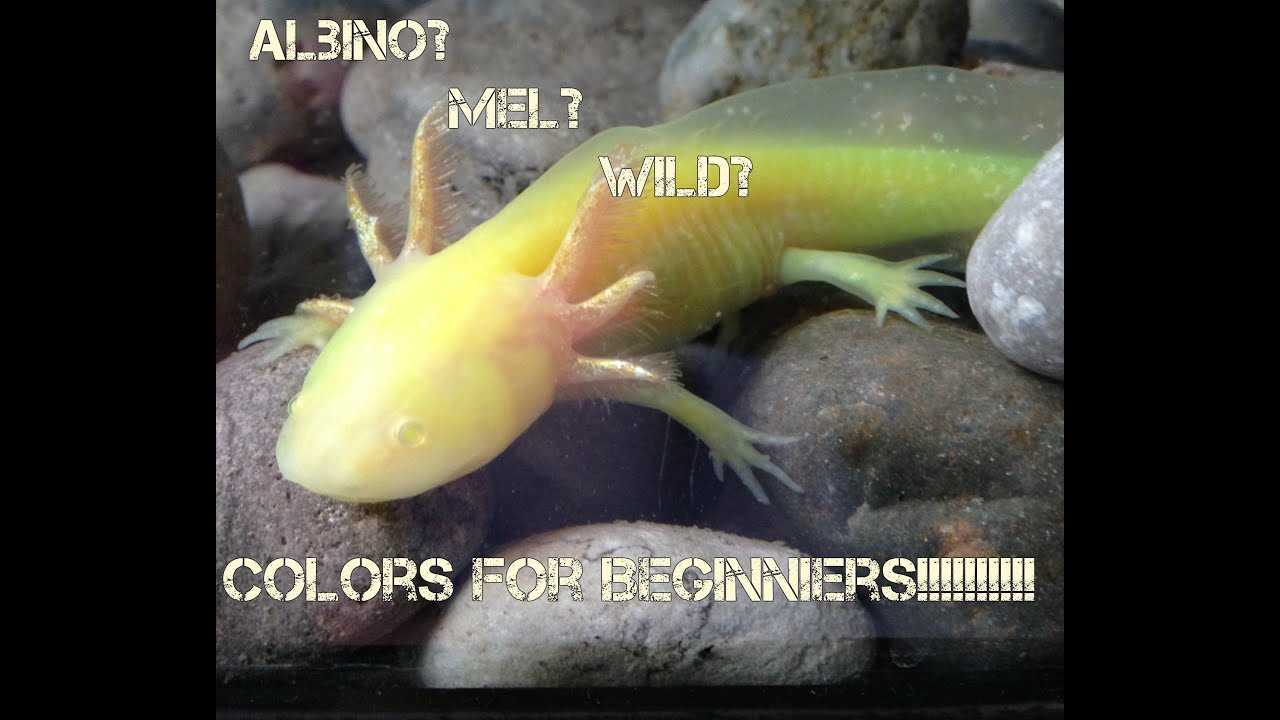
Regularly monitoring the temperature of the axolotl tank is necessary to ensure a stable environment. Using a reliable aquarium thermometer will help you keep track of the water temperature accurately.
If the temperature in the axolotl’s habitat goes above or below the recommended range, necessary adjustments should be made. A heater or chiller can be used to regulate the temperature and ensure a more stable environment for your axolotl’s coloration.
Conclusion
Axolotl Color Change
Axolotls are fascinating creatures known for their unique ability to change color. This color change phenomenon in axolotls is primarily influenced by various factors, including stress.
When axolotls are stressed, such as due to changes in their environment or improper handling, they may experience color changes. These color changes can range from slight variations in hue to more significant shifts in pigmentation.
Causes of Stress in Axolotls
There are several factors that can cause stress in axolotls, ultimately leading to changes in their coloration:
- Temperature fluctuations: Axolotls are sensitive to changes in temperature, and extreme fluctuations can cause stress and color shifts.
- Poor water quality: Axolotls require clean and well-maintained water to thrive. Poor water quality, including high levels of ammonia or nitrites, can stress the axolotls and impact their coloration.
- Lack of hiding spots: Axolotls are nocturnal creatures and require hiding spots in their tanks to feel secure. Without sufficient hiding spots, they may feel exposed and stressed, leading to color changes.
- Inadequate diet: A balanced and nutritious diet is crucial for maintaining vibrant coloration in axolotls. Inadequate nutrition can lead to stress and dull coloration.
Minimizing Stress to Maintain Vibrant Coloration
To ensure optimal coloration in axolotls, it is essential to provide them with a stress-free environment. Here are some tips:
- Maintain stable water temperature: Regularly monitor and control the temperature of the axolotl tank to prevent sudden fluctuations.
- Maintain good water quality: Regularly clean the tank and perform water tests to ensure proper water parameters. Use a filtration system to remove toxins and debris.
- Create hiding spots: Add suitable hides and decorations to the tank to provide the axolotls with places to retreat and feel safe.
- Provide a balanced diet: Feed the axolotls a variety of high-quality foods, including live and frozen options, to ensure they receive all the necessary nutrients.
- Handle with care: Minimize handling and avoid excessive touching or stressing the axolotls. Instead, observe them from a distance to reduce the risk of stress-related color changes.
| Stress Factor | Effect on Axolotl Coloration |
|---|---|
| Temperature fluctuations | Can cause color shifts |
| Poor water quality | Can lead to dull coloration |
| Lack of hiding spots | Can cause stress-related color changes |
| Inadequate diet | Can result in dull coloration |
| Overhandling | Can lead to stress-related color changes |
How Water Quality can Impact Axolotl Color
One of the factors that can greatly influence the color of axolotls is water quality. Axolotls are highly sensitive to changes in their environment, and poor water quality can have negative effects on their coloration.
Axolotls have the ability to change their color in response to their surroundings, and their vibrant colors can be a good indicator of their overall health and well-being. When water quality is poor, it can cause stress and lead to changes in the axolotls’ coloration.
One of the main causes of poor water quality is inadequate filtration and water maintenance. If the water in the axolotl tank is not properly filtered and cleaned, it can become polluted with waste and harmful substances. This can lead to an imbalance in pH levels and the accumulation of toxins, which can negatively affect the axolotls’ color.
Another factor that can impact axolotl color is the temperature of the water. Axolotls are ectothermic animals, which means that their body temperature is dependent on their environment. When the water temperature fluctuates too much, it can stress the axolotls and result in changes in their coloration.
Genetics and Axolotl Color Variation
One fascinating aspect of axolotls is their remarkable color variation. These unique creatures come in a wide array of colors, including shades of brown, black, gray, and even albino forms. The reason behind this incredible variety lies in their genetics.
Genes play a crucial role in regulating the distribution and density of these pigment cells, resulting in the characteristic color patterns and variations seen in axolotls. Different combinations of genes can produce striking colorations, such as spotted or marbled patterns.
It’s worth noting that axolotls can also undergo color changes throughout their lives due to environmental factors or health conditions. These changes, though temporary, can still be fascinating to observe.
Caring for Axolotls: Providing Optimal Habitat Conditions
One important aspect of caring for axolotls is providing them with optimal habitat conditions. These fascinating creatures are highly sensitive to their environment, and the quality of their habitat can have a significant impact on their overall well-being and coloration.
Temperature and Water Parameters
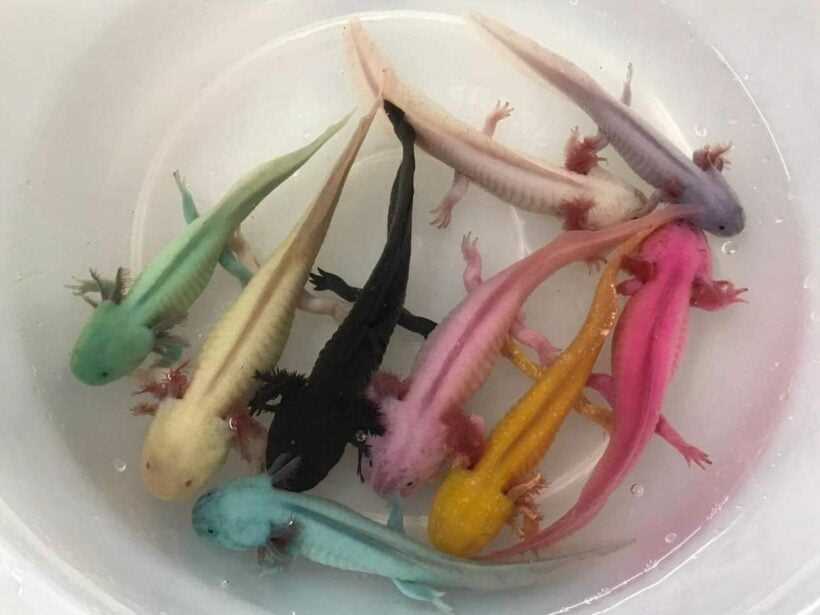
A consistent and appropriate temperature is crucial for maintaining vibrant colors in axolotls. They are native to cool, freshwater habitats in Mexico, and they thrive in temperatures between 60-68°F (16-20°C). Fluctuations in temperature can cause stress and potentially lead to color changes.
Lighting
Proper lighting can also impact axolotl coloration. They are most active during the night and prefer dim lighting during the day. Avoid exposing them to direct sunlight, as it can increase water temperature and cause stress. Instead, use low-intensity artificial lighting or natural indirect light to provide a comfortable and natural environment.
Adequate Space and Hiding Places
Axolotls are fairly active and require adequate space to swim and explore. Providing a spacious tank is essential for their well-being and coloration. A general rule of thumb is to have at least 10 gallons of water for each axolotl, and a tank length of at least 20 inches (50 cm) to accommodate their size.
In addition to space, axolotls also require hiding places, such as caves or plants, to feel secure. These hiding places not only provide shelter but also help recreate their natural habitat. Avoid sharp decorations that could potentially harm them, and ensure that the tank setup allows for easy cleaning and maintenance.
Diet and Nutrition
Providing a balanced and nutritious diet is essential for maintaining vibrant axolotl coloration. Their diet primarily consists of live or frozen foods, such as bloodworms, brine shrimp, and daphnia. It is crucial to ensure that the food offered is appropriate in size and easily digestible.
A varied diet is also beneficial to provide essential nutrients. Supplementing their diet with commercial axolotl pellets or gel-based foods specifically formulated for axolotls can help ensure they are receiving a balanced diet. However, live or frozen foods should always remain the primary component of their diet.
Remember to feed your axolotl appropriately, offering small portions multiple times a day. Avoid overfeeding, as excess food can contribute to poor water quality and potential health issues.
By following these guidelines and providing optimal habitat conditions, you can help ensure that your axolotl remains healthy, happy, and displays vibrant colors. Monitoring and adjusting the environmental factors discussed will not only support their coloration but also promote their overall well-being.
The Importance of Tank Size for Axolotl Welfare
Axolotls are unique aquatic creatures that require specific living conditions to thrive, including an appropriate tank size. The size of the tank plays a crucial role in the overall welfare and well-being of the axolotls, as it directly influences their behavior, growth, and coloration.
In a smaller tank, axolotls may feel cramped and confined, leading to stress and stunted growth. Stress can result in color changes, as axolotls may exhibit a duller or less vibrant coloration when they are not provided with sufficient space to move and explore.
Additionally, a smaller tank may lead to poor water quality due to increased waste buildup. Axolotls are delicate creatures and are highly sensitive to water parameters. Inadequate tank size can make it challenging to maintain proper filtration and water circulation, leading to ammonia buildup and other water quality issues.
On the other hand, a larger tank provides more water volume, which dilutes waste and makes it easier to maintain stable water conditions. This, in turn, can help promote healthier and more vibrant coloration in axolotls.
Factors to consider when choosing a tank size for axolotls:
- Size of the axolotls: Axolotls can grow to a significant size, with some reaching up to 12-14 inches in length. It is essential to consider the adult size of your axolotls when selecting a tank to ensure they have enough space to move comfortably.
- Number of axolotls: If you plan on keeping multiple axolotls, the tank should be large enough to accommodate all individuals and provide adequate swimming and hiding spaces.
- Enrichment: Axolotls benefit from having various objects in their tank, such as rocks, plants, and caves, to explore and interact with. A larger tank allows for more enrichment options, which can help stimulate their natural behaviors.
Overall, providing a spacious tank for your axolotls is essential for their overall welfare, health, and coloration. A larger tank size allows for more natural behavior, reduces stress, and promotes optimal water quality. By taking the time to select an appropriate tank size, you can ensure that your axolotls thrive and display their vibrant colors to their fullest potential.
Feeding and Nutrition for Vibrant Axolotl Coloration
Feeding and nutrition play a crucial role in maintaining vibrant coloration in axolotls. A well-balanced diet is essential for their overall health and the brightness of their skin pigmentation.
It is recommended to feed axolotls small, frequent meals rather than one large meal. This mimics their natural feeding pattern in the wild, where they graze on small prey throughout the day. Overfeeding can lead to health issues and poor coloration. Generally, axolotls should be fed every day or every other day, adjusting the amount based on their size and activity level.
In addition to a varied diet, water quality also impacts axolotl coloration. Clean, well-maintained water is essential for their overall health and vibrant appearance. Regular water changes and filtration systems are important in removing waste and toxins from the tank. Good water quality promotes optimal digestion and nutrient absorption, which in turn affects their coloration.
Axolotls are sensitive to water temperature, and maintaining a proper temperature range is crucial for their wellbeing and coloration. The ideal water temperature for axolotls is between 16-18°C (60-64°F). Higher temperatures can stress and harm axolotls, leading to changes in their coloration.
Providing ample hiding spots and a comfortable environment also helps reduce stress in axolotls, which can negatively affect their coloration. An enriched habitat with plants, rocks, and other decorations creates a sense of security and promotes natural behaviors.
Conclusion
Handling Axolotls: Minimizing Stress and Color Changes
1. Limit handling
Axolotls are sensitive creatures, and excessive handling can cause stress. Limit the frequency and duration of handling sessions to minimize stress and potential color changes. Avoid unnecessary handling and only handle your axolotl when necessary, such as during tank maintenance or health checks.
2. Use gentle techniques
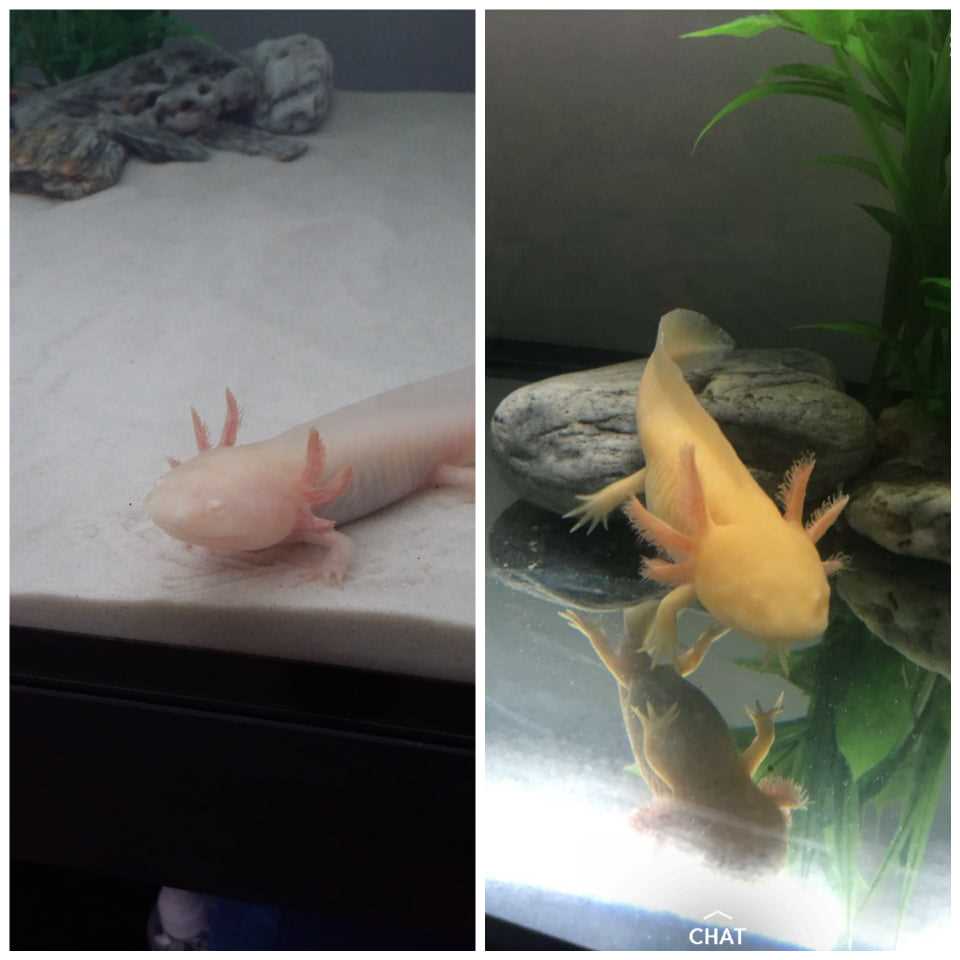
3. Wet your hands before handling
Axolotls have very delicate skin, and dry hands can cause irritation and stress. Wet your hands with clean, dechlorinated water before handling to provide a smooth and gentle surface for your axolotl.
4. Avoid sudden movements
Sudden movements can startle axolotls and trigger stress responses. When handling your axolotl, move slowly and smoothly to avoid sudden jerks or motions. This will help maintain a calm environment and minimize stress.
5. Provide a secure grip
Ensure that you have a secure grip on your axolotl while handling to avoid accidentally dropping or injuring it. Always support its body from underneath, using both hands if necessary. Avoid holding the axolotl by its limbs or tail, as this can cause injury.
6. Minimize exposure to air
Axolotls are primarily aquatic creatures and are not well-suited to prolonged exposure to air. When handling, keep the axolotl close to the water’s surface or provide a shallow container with water for temporary relocation. This will ensure that the axolotl remains hydrated and minimize stress.
Common Health Issues Affecting Axolotl Color Appearance
1. Bacterial Infections: When axolotls are exposed to bacteria, they can develop infections that impact their color. Common signs of bacterial infections include changes in color intensity, patches of discoloration, and cloudy or fuzzy areas on the skin.
3. Parasites: Parasitic infestations can affect the overall health of axolotls, including their coloration. Common signs of parasitic infections include changes in color intensity, dullness, and visible parasites on the skin.
4. Poor Water Quality: Axolotls are highly sensitive to changes in water quality, and poor water conditions can lead to stress and health issues that impact their color. Ammonia and nitrite spikes can cause a loss of vibrancy, while high levels of nitrate can result in a darkening of colors.
5. Poor Nutrition: A lack of proper nutrition can also affect axolotl coloration. Inadequate diet and nutrient deficiencies can result in dull and faded colors.
6. Stress: Axolotls are susceptible to stress, and prolonged periods of stress can cause color changes. Stressors such as improper handling, overcrowded tanks, and sudden changes in water conditions can lead to a loss of vibrancy or faded colors.
It is essential for axolotl owners to provide a clean and well-maintained habitat, offer a balanced and nutritious diet, and minimize stressors to ensure their axolotls maintain their vibrant and captivating colors. Regular monitoring and prompt treatment of any health issues that arise are crucial for preserving the beauty of these unique creatures.
Recognizing and Treating Axolotl Coloration Problems
Common Coloration Issues
There are several common coloration issues that axolotls can experience:
| Issue | Description |
|---|---|
| Loss of Color | Axolotls may lose their vibrant coloration and appear pale or faded. |
| Dark Spots | Some axolotls may develop dark spots or patches on their bodies. |
| Abnormal Coloration | Axolotls may exhibit unusual or inconsistent color patterns. |
| Reddening | Increased redness in the skin or gills can indicate a health issue. |
Causes of Coloration Problems
Coloration problems in axolotls can be caused by a variety of factors:
- Poor water quality, including high ammonia or nitrate levels.
- Inadequate diet, lacking essential nutrients.
- Stress, such as from improper handling or an unsuitable environment.
- Genetic factors, which can result in abnormal coloration or patterns.
- Illness or disease, such as bacterial or fungal infections.
Treatment and Prevention
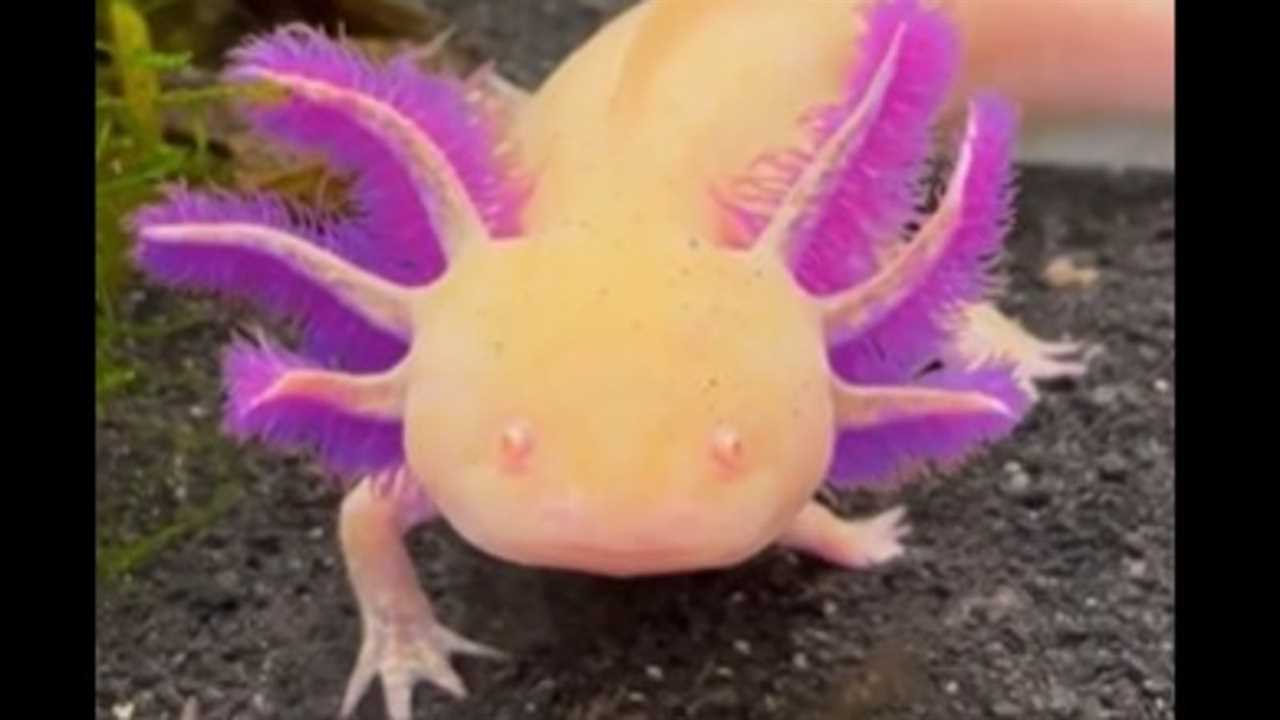
- Test and maintain optimal water quality to ensure a healthy environment for your axolotl.
- Provide a balanced and nutritious diet that includes a variety of foods.
- Minimize stress by handling your axolotl properly and providing a suitable habitat.
- Consult a veterinarian if you suspect that your axolotl has a health issue.
- Follow any recommended treatment plans or medications provided by the veterinarian.
- Regularly monitor and observe your axolotl for any changes in coloration or behavior.
By addressing and treating coloration problems in axolotls, you can help ensure the overall health and well-being of your pet. Remember to always provide a clean and suitable environment for your axolotl, and seek professional help when needed.

I’m Lena Adams—a product of an unconventional upbringing in the African wilderness. My father, a daring explorer of African wildlife, sparked my fascination with reptiles, a passion that intertwined with the tragic loss of my mother during an expedition, leaving an indelible mark on my life. Driven to understand the creatures that captivated my parents, I embarked on my journey, sharing insights about reptiles, frogs, and lizards on my website. Through my explorations and conservation efforts, I honour my family’s legacy while seeking connections—to the creatures, nature, and the mother whose presence I yearn to understand.
